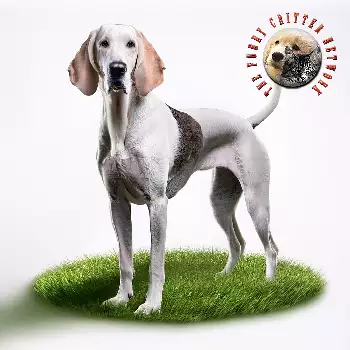The history of the Posavaz Hound stretches back several centuries into the mists of Croatian hunting tradition, though the exact origins of the breed remain shrouded in mystery and scholarly debate. What is certain is that these remarkable scent hounds emerged from the fertile Sava Valley region of Croatia, an area whose geographic features and climate created the perfect environment for developing dogs capable of tracking small game through challenging terrain.
Archaeological and artistic evidence suggests that dogs bearing a striking resemblance to the modern Posavaz Hound have existed in the region since at least the late 15th century. Frescoes from this period depict hunting scenes featuring hounds with the characteristic long ears, moderate size, and determined expression that we associate with the breed today. These early artistic representations provide valuable insight into how these dogs were valued by Croatian nobility and hunters of the era.
Historical documentation becomes more reliable beginning in the 18th century. Bishop of Đakovo Petar Bakić wrote about local hunting dogs in 1719, describing animals that match the characteristics of the Posavaz Hound. Similarly, veterinarian Franjo Bertić of Đakovo provided detailed descriptions of the breed in 1859, documenting not only their physical characteristics but also their hunting methods and the high regard in which they were held by local hunters.
The ancestry of the Posavaz Hound is a subject of considerable speculation among canine historians. One theory suggests that these dogs descended from ancient Molossian hunting dogs that were crossed with Egyptian sighthounds brought to the region by Phoenician traders who frequently used Croatian ports along the Adriatic Sea. This theory would explain the breed's combination of tenacity and grace, as well as their exceptional scenting ability.
An alternative theory proposes that the Posavaz Hound developed through crosses between various European scenting breeds, possibly including Harriers, Beagles, and other regional hounds. This theory is supported by the breed's similarities to other European scent hounds and their apparent genetic diversity, which suggests multiple ancestral lines rather than a single founding population.
During the 1800s, these hounds became widely known throughout Croatia and neighboring regions under the name "Boskini." Croatian traders and hunters valued them so highly that they were frequently sold and traded across regional boundaries, spreading their reputation throughout the Balkans. This period saw the breed's characteristics become more standardized as selective breeding practices became more sophisticated.
The breed's development was significantly influenced by its working role. Croatian hunters needed dogs capable of tracking fox, hare, and other small game through the varied terrain of the Sava Valley, which includes wetlands, forests, and rolling hills. This environmental pressure selected for dogs with exceptional endurance, determination, and scenting ability, while their need to work closely with human hunters favored those with trainable, cooperative temperaments.
The first official stud book for the Posavaz Hound was established in 1929, marking the beginning of formal breed documentation and standardization efforts. This was a crucial step in preserving the breed's characteristics and ensuring consistent breeding practices. The stud book also helped establish the breed's identity separate from other regional hunting dogs.
International recognition came in 1955 when the Fédération Cynologique Internationale accepted the breed for registration under the name "Kras Posavac Basin Hound." However, the breed's name underwent several changes before finally settling on "Posavac Hound" in 1969, reflecting ongoing efforts to establish a clear and consistent identity for the breed in the international community.
The breed faced challenges during the 20th century, particularly during the various conflicts that affected the Balkans. However, dedicated Croatian breeders worked to preserve the breed's working characteristics and genetic diversity. Their efforts ensured that the Posavaz Hound survived these difficult periods and continued to thrive in its homeland.
Recognition by the United Kennel Club in 2006 marked an important milestone in the breed's international development. This recognition brought the Posavaz Hound to the attention of North American dog enthusiasts and provided a pathway for the breed's development outside its native Croatia.
Today, the Posavaz Hound remains relatively rare outside of Croatia and neighboring countries, but interest in the breed is growing among hunting dog enthusiasts and those seeking unique companion dogs. Modern breeding programs focus on maintaining the breed's working ability while ensuring genetic health and temperament suitable for both hunting and family life. The breed's future looks promising as more people discover the exceptional qualities that have made these dogs valued companions for centuries.

